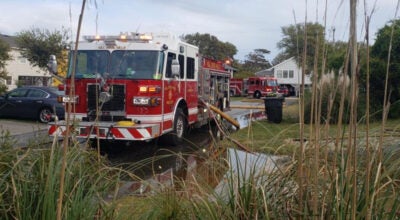Update on COVID-19 numbers and metrics
Published 9:54 am Friday, May 1, 2020
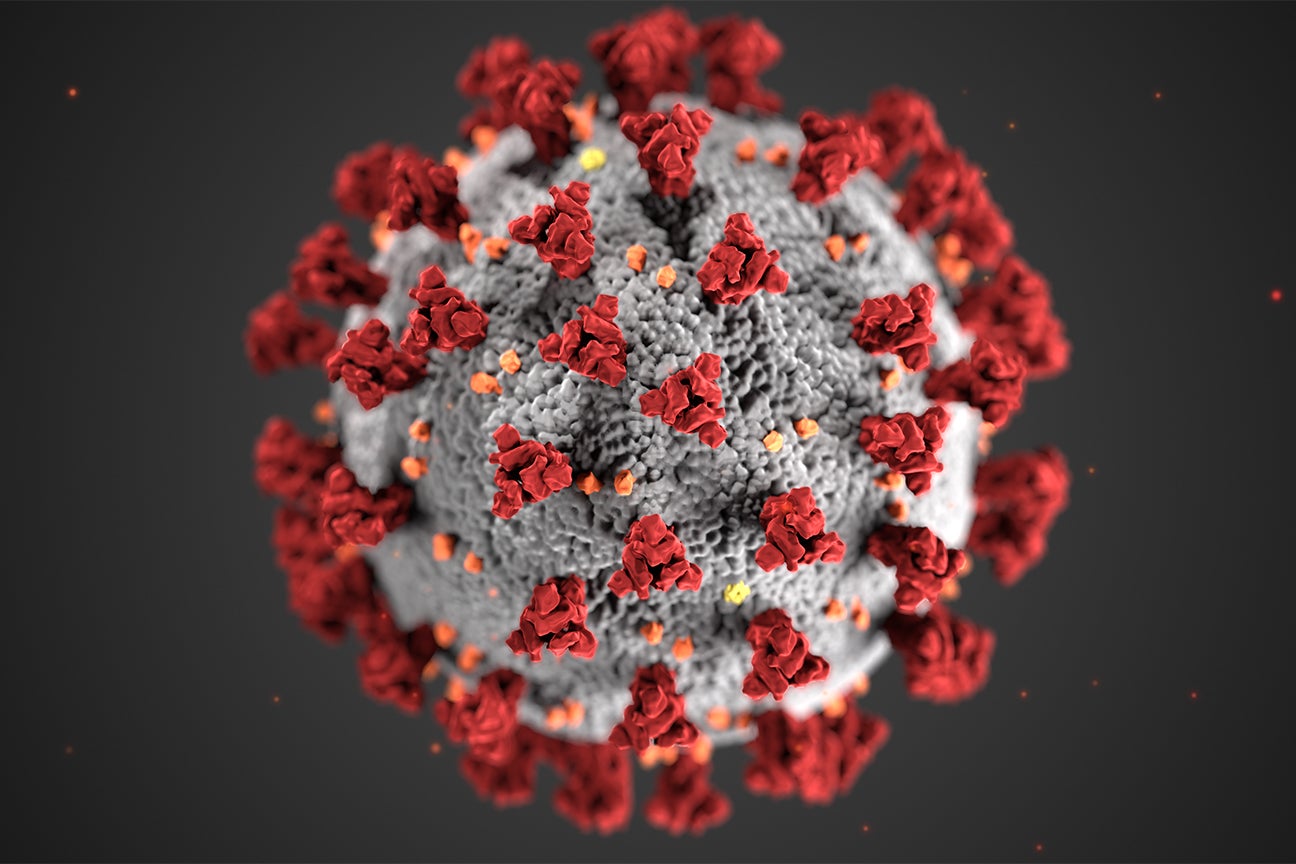
- This illustration, created at the Centers for Disease Control and Prevention (CDC), reveals ultrastructural morphology exhibited by coronaviruses. Note the spikes that adorn the outer surface of the virus, which impart the look of a corona surrounding the virion, when viewed electron microscopically. A novel coronavirus, named Severe Acute Respiratory Syndrome coronavirus 2 (SARS-CoV-2), was identified as the cause of an outbreak of respiratory illness first detected in Wuhan, China in 2019. The illness caused by this virus has been named coronavirus disease 2019 (COVID-19).
|
Getting your Trinity Audio player ready...
|
Compiled by Mary Helen Goodloe-Murphy
Several metrics are followed in North Carolina to determine when to lessen statewide restrictions. The goal for the metrics is “sustained leveling or decreased trajectory” over 14 days.
On April 28, 2020, North Carolina reported 9,568 laboratory-confirmed cases of COVID-19, which is an increase of 426 from Monday, April 27.
Sustained leveling or decreased trajectory in percent of tests returning positive over 14 days is another metric. Currently, North Carolina’s trajectory in percent of tests returning positive over the last 14 days is decreasing at a slow rate.
Deaths caused by COVID-19 now stand at 342 in North Carolina. This number represents 36 more people in North Carolina who have died from this virus.
On April 28, 463 people were hospitalized, which is 10 people less than Monday.
The number of people showing up in Emergency Departments with COVID-19-like illnesses is on a downward trajectory.
Information is from COVID-19 Dashboard on the North Carolina Department of Health and Human Services website.
Cases
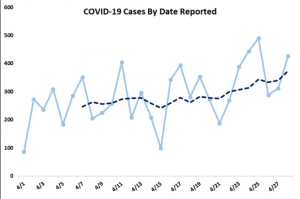
Is North Carolina seeing a downward trajectory over 14 days or sustained leveling in new cases?
These are laboratory-confirmed COVID-19 cases, by date reported. COVID-19 cases reported by date of specimen collection are also available. Limitation: These numbers only reflect laboratory-confirmed cases and not all people who have or had COVID-19.
Positive test percentage
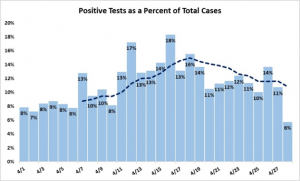
Is North Carolina seeing a 14-day downward trajectory of positive tests as a percentage of total tests?
As testing is increased, there will be more laboratory-confirmed cases. Looking at what percent of total tests are positive helps to understand whether laboratory-confirmed cases are increasing in comparison to the number of tests conducted.
To calculate this, North Carolina uses positive tests and total test numbers from labs that reported both positive and negative tests electronically into the state’s electronic surveillance system. This ensures that the positive and total tests were conducted on the same day to calculate a more accurate daily percent positive.
Limitation: “While most labs report negative results, we do not get this data from all labs. The labs used in the percent positive calculation represent the majority of total tests reported to the state.”
Emergency Room Visits
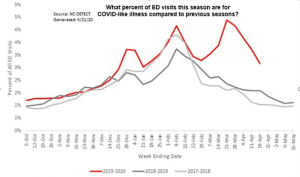
Is North Carolina seeing a continued downward trajectory of COVID-Like Illnesses in its surveillance systems?
The North Carolina Department of Health and Human Services is using all available tools to monitor the spread of COVID-19 across the state. In addition to tracking and reporting of laboratory-confirmed cases, the department is using many of the same systems that are used to track influenza and other respiratory illnesses each season.
Mild COVID-19 illness presents with symptoms similar to influenza-like illness, so surveillance systems that have historically been used during influenza seasons are being used to track trends of mild COVID-19 illness and allow for comparison with prior influenza seasons.
Limitation: These numbers represent only people seeking care in the Emergency Department.
Hospitalizations
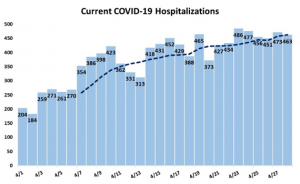
Is North Carolina seeing a 14-day downward trajectory in the number of people currently hospitalized?
This shows the number of people who are currently hospitalized with COVID-19 by reporting hospitals. Limitation: People stay in the hospital multiple days with COVID-19, and so this reflects the number of people reported by 92% of hospitals in the state.
In addition to these metrics, the state continues building capacity to be able to adequately respond to an increase in virus spread. These include:
Tests reported
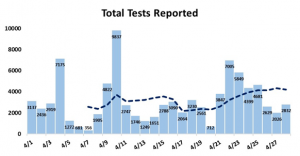
Testing
Does North Carolina have the capacity to test an average of 5,000 to 7,000 people daily?
This shows the number of total tests reported each day to NCDHHS. The average is taken as a seven-day rolling average.
Limitation: “While most labs report negative tests, we do not get this data from all labs. While positive cases must be reported immediately, negative tests can be reported in batches; for example, when a new lab begins reporting it will often report for more than the previous 24 hours. This often explains high days of reported testing.”
Tracing
Does North Carolina have sufficient capacity to conduct contact tracing?
Contact tracing identifies contacts of a person who have tested positive for COVID-19 to determine if those people may also be positive. This helps North Carolina understand the spread of the disease, and more rapidly identify people who may have COVID-19.
North Carolina currently has more than 250 contact tracers with local health departments. The state aims to double this, to at least 500 contact tracers, as well as deploying digital tracing technology to support contact tracers.
On April 27, NCDHHS announced the formation of the Carolina Community Tracing Collaborative. The Collaborative is now hiring tracers.
PPE
Availability of Personal Protective Equipment: The state is working to ensure there are adequate supplies to fulfill requests for critical equipment for at least 30 days. This includes face shields, gloves, gowns, N95 masks, and surgical and procedural masks.
As of April 28, the state has the following supply of critical Personal Protective Equipment:
face Shields, 36 days; gloves, 133 days; gowns 0, N95 Respirators 1; surgical and procedural masks, 62 days.
RECENT HEADLINES:
Cooper urges North Carolinians to stay vigilant, says state may move into Phase I next week



